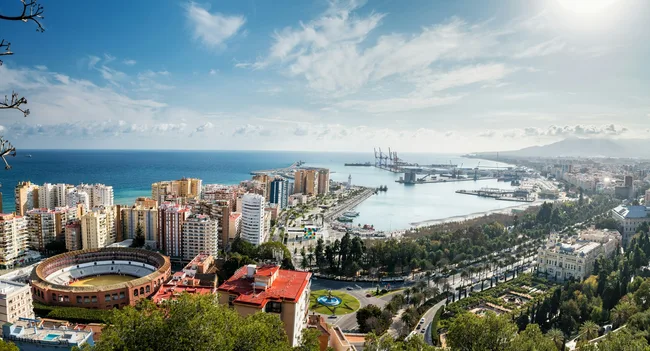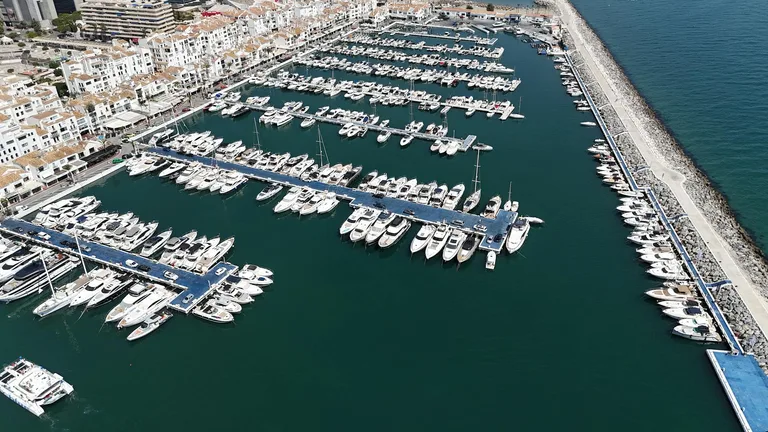
- Tax on non-EU buyers proposed
- 140% rise in Gulf buyers in Spain
- Seeking lower-cost luxury properties
For a new generation of young, wealthy Gulf investors, London and Paris are out, and property in Marbella and Malaga is in, even if Spain’s leader is doing all he can to deter them.
A fresh plan by Spanish Prime Minister Pedro Sánchez to impose a 100 percent tax on acquisitions of domestic real estate by non-EU nationals could throw a wrench in what appears to be a growing trend of Arab funds going into properties in the world-renowned Costa del Sol.
A real estate broker who serves GCC investors in southern Spain tells AGBI that Sánchez’s announcement has stirred “a lot of attention” but that, for the time being, his clients do not appear exceedingly worried.
“The general feeling is that this proposal is still a long way from becoming a reality,” says Ryan Dougan, a consultant that focuses on the luxury segment in Marbella, London and Dubai.
Multiple developers with projects in Costa del Sol were not available to comment on the new tax.
Dougan moved to Marbella last summer to support Gulf developers launching into Costa del Sol after he spent four years in Qatar advising wealthy GCC nationals on foreign real estate purchases.
In his practice, he saw a 143 percent increase from 2023 to 2024 in the value of properties that citizens of the Gulf have acquired in Costa del Sol region – either for personal use or private investment such as rentals. About 60 percent of the money has gone into the former and 40 percent into the latter.
Early commitments in 2025 suggest continued strong growth this year, Dougan adds.
“The starting point of me coming here was the increase of activity,” he says. “In my previous Qatar-based role, the odd request here and there would be for Spain and that seemed to just increase quite a bit.”

Interest in resort-like destinations has risen since the Covid-19 pandemic amid a generational shift in Gulf buyers, while the growth of a lifestyle- and wellness-focused culture in their GCC home countries has also had an impact.
“Until as recently as a couple of years ago, the fathers, the uncles, the slightly older generation, were buying a house in London or Paris because it was ingrained in them,” Dougan says.
But younger affluent Arabs are not as eager to spend entire summers in just one place, and remote work has also given them the ability to move around while still doing business.
They no longer seek the type of commitment linked to the €20 million palaces of yore, preferring instead high-end, but more manageable properties in the €2–€5 million range, according to Dougan.
Qatar Airways banked on some of these trends when it decided last year to bring its summer schedule of flights between Doha and Malaga, the largest city in Costa del Sol, to a year-round service. It is the sole Middle Eastern airline with this offering, although Etihad, Kuwait Airways, Gulf Air and Saudia fly direct to Malaga in the summer.
Development opportunities
Gulf developers are following in the same footsteps, as they chase the growing numbers of investors and tourists. Laura de Arce, director of Marbella tourism, was cited in the local press last January as saying that visitors from the GCC were up 10 percent in 2023 over 2022.
In December, Modon Holding, which is majority-owned by Abu Dhabi sovereign wealth fund ADQ and IHC Group, completed the acquisition of La Zagaleta in Benahavís, where villas can go for upwards of €30 million.
Modon’s purchase also includes 2.2 million square metres of land of the Majarambuz project in Sotogrande, about 45 minutes’ drive away.
In May, the UAE’s Bloom Holding and Lead Development joined up with Spain’s Mabel Real Estate to build high-end residences near Marbella’s sought-after Golden Mile promenade.
A month earlier, Unicorn Royal Emirates bought hospitality company Santa Marta – and its beachfront hotel project, which is still being built in Estepona – for €40 million.
Dar Global, the London-listed international arm of Saudi Arabia’s Dar Al Arkan, is building 53 villas in partnership with Italian luxury carmaker Lamborghini at its Tierra Viva community, in the hills overlooking the same town.
Beyond this, Qatar’s investors are deeply involved in the redevelopment of the Port of Malaga. Kuwait, meanwhile, hosted a themed Marbella Real Estate Expo early last year to bring investments in Costa del Sol directly to locals.
“The market doesn’t look like it’s slowing down anytime soon,” says Dougan. “And it’s still quite good value on a global scale, so from a development point of view, your profit margins are certainly higher than major cities like London and Paris.”
A luxury home in the Malaga province typically goes for €5.25 million, or €7,200 euros per square metre, according to 2024 numbers analysed in the latest annual report by the local affiliate of international property brokerage The Agency. In Marbella, it is around €7.4 million or €12,900 euros per square metre.
By way of comparison, real estate in London’s priciest neighbourhoods can go for upwards of £30,000 (€35,800) per square metre.
Sánchez’s proposed tax – which aims to address a housing affordability crisis – will first undergo “careful study,” according to the Spanish government, and would then have to clear parliament before becoming law.
“Given the current political landscape, most people don’t think it’s likely to pass any time soon – if at all,” Dougan says. “But if this does eventually move forward and some kind of surcharge for non-EU buyers is introduced, the details will be key.”
Similar attempts to deter wealthy foreigners from buying properties in London affected the market in the short term, but do not seem to have significantly moved the needle on a permanent basis.



